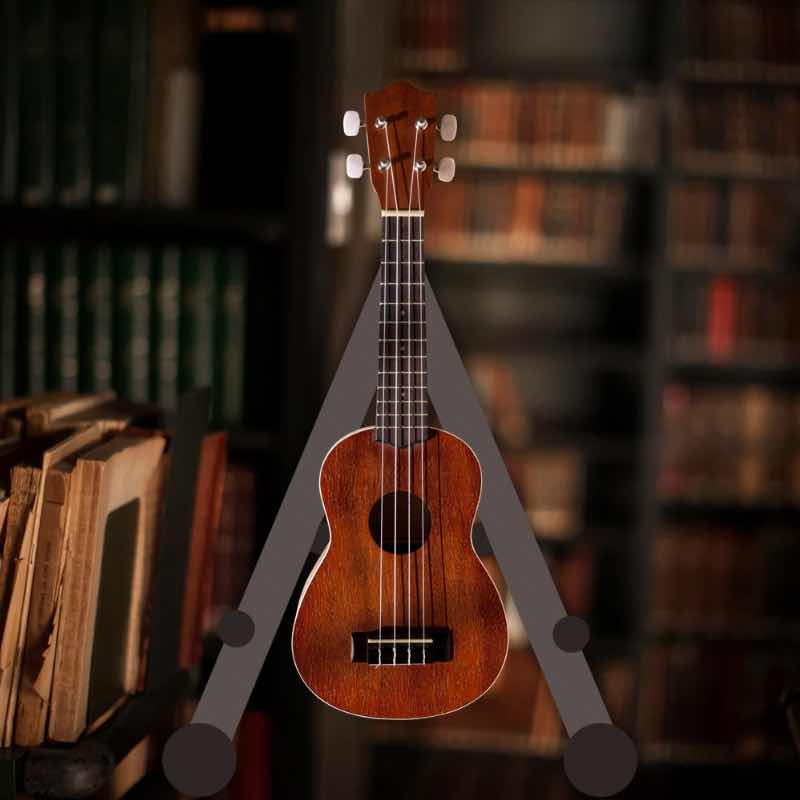
The History of the Ukulele: Origins, Famous Players & UK Revival
Share
Where Does The Ukulele Come From?
- The ukulele, a small four-stringed instrument, has a rich and fascinating history rooted in the 19th century. It originated in the beautiful islands of Hawaii, but its ancestry traces back to Madeira, Portugal. The instruments name, ukulele, translates to jumping flea in English, believed to reference the quick finger movements of skilled players.
Portuguese Roots and Hawaiian Adaptation
- The ukulele evolved from the braguinha (or machete de Braga), a small Portuguese stringed instrument brought to Hawaii by Portuguese immigrants in 1879. These immigrants, primarily from Madeira, arrived to work on Hawaiians sugar plantations. Among them were three skilled luthiers:
- Manuel Nunes
- Augusto Dias
- Jose do Espirito Santo
- These craftsmen adapted the braguinha by altering its size, shape, and tuning, creating what we now recognise as the ukulele.
Who Invented the Ukulele?
- Although no single person can be credited within venting the ukulele, Manuel Nunes is often recognised as one of the most influential figures in its early development. He, along with Dias and Espirito Santo, was instrumental in refining the instrument and making it widely available in Hawaii.
Royal Endorsement and Popularity in Hawaii
- The ukulele quickly gained popularity in Hawaii, thanks in part to the Hawaiian royal family. King David Kalakaua, a strong advocate for Hawaiian culture and the arts, embraced the ukulele and incorporated it into royal ceremonies. His endorsement helped solidify the ukulele as a key part of Hawaiian music.
The Ukulele’s Expansion to the United States
- The 1915 Panama-Pacific International Exposition
- The ukulele’s introduction to the mainland United States can be traced back to the Panama-Pacific International Exposition in San Francisco (1915). This world’s fair celebrated the completion of the Panama Canal and showcased San Francisco’s recovery from the 1906 earthquake.

Key Figures in Popularising the Ukulele in the U.S.:
- ‘Jonah Kumalae’ A Hawaiian ukulele maker who exhibited his ukuleles at the fair, making them accessible and affordable.
- ’Ernest Kaai’ A talented musician whose performances mesmerised American audiences.
- ‘George E.K. Awai’ Another key Hawaiian musician who introduced visitors to the instrument’s charm.
Impact of the Exposition
- The performances at the Hawaiian Pavilion captivated thousands of attendees.
- Demand for the ukulele skyrocketed across the United States.
- By the 1920s, the ukulele was featured in vaudeville performances and jazz music, solidifying its place in American culture.
The Ukulele’s Journey in the UK
- Early Popularity (1920s - 1940s)
- The Hawaiian music craze that swept through the U.S. in the early 20th century also influenced the United Kingdom. The instrument’s cheerful, accessible sound made it appealing to British musicians and audiences.
George Formby and the Ukulele Boom
One of the most influential figures in the UK’s ukulele history was George Formby.
- A comedian, actor, and musician, Formby became famous in the 1930s and 1940s for his fast-paced ukulele playing and humorous songs.
- His style featured the banjolele (a hybrid of the ukulele and banjo), which became widely popular in Britain.
- Songs like When I’m Cleaning Windows cemented his legacy.
Decline and Revival (Post-WWII to Modern Day)
- After World War II, changing musical trends led to a decline in the ukulele’s popularity.
- However, the 1970s folk revival and DIY music culture helped spark renewed interest.
- By the 2000s and 2010s, musicians like Eddie Vedder and Jake Shimabukuro helped bring the ukulele back into mainstream music.
Modern-Day Ukulele Popularity in the UK
- Ukulele festivals and clubs have become widespread, such as the Grand Northern Ukulele Festival (GNUF).
- Schools now use the ukulele as an accessible teaching instrument, replacing the recorder in many music programmes.
Types of Ukuleles and How They Evolved
The ukulele comes in four main sizes, each with a distinct tone and purpose:
1. Soprano - The original size, known for its bright, traditional Hawaiian sound.
2. Concert - Slightly larger, producing a fuller tone with more projection.
3. Tenor - Popular with professionals for its deeper, richer sound.
4. Baritone - Tuned like the top four strings of a guitar (D-G-B-E), offering a unique tone.
Also see ‘The different types of ukuleles compared’
The Ukulele in Different Music Genres
- While the ukulele is most commonly associated with Hawaiian music, it has found a place in many genres:
- Jazz - Lyle Ritz pioneered ukulele jazz in the 1950s.
- Rock & Pop - Used in songs like Hey, Soul Sister (Train) and Somewhere Over the Rainbow (Israel Kamakawiwo’ole).
- Indie/Folk Artists like Eddie Vedder and Vance Joy incorporate the ukulele into their music.
Famous Ukulele Players Throughout History
- Israel Kamakawiwo’ole - His rendition of Somewhere Over the Rainbow remains one of the most beloved ukulele recordings.
- Jake Shimabukuro - A modern virtuoso known for his intricate fingerpicking techniques.
- George Harrison / The Beatles’ lead guitarist was an avid ukulele fan and collector.
- Taylor Swift, Billie Eilish, and Twenty One Pilots - Modern artists incorporating the ukulele into their music.
Fun Facts About the Ukulele
- The ukulele became Hawaii’s official state instrument in 2015.
- The world’s largest ukulele ensemble included 8,065 players in Hong Kong (2017).
- The ukulele was featured on Elvis Presley’s album Blue Hawaii.
- The term ukulele may also refer to a British officer, Edward Purvis, who was nicknamed Ukulele’ and helped introduce the instrument to Hawaiian royalty.
Why Is the Ukulele More Popular Than Ever?
The ukulele has never been more accessible, thanks to:
- YouTube tutorials making it easy to learn.
- Affordable prices, with beginner models available for under £40.
- A resurgence in pop culture, with major artists embracing the instrument.
Final Thoughts
From Hawaiian royalty to modern pop music, the ukulele has travelled an incredible journey. Whether played on a tropical beach, at a music festival, or in a beginner’s bedroom, the ukulele continues to bring joy and inspiration worldwide.
